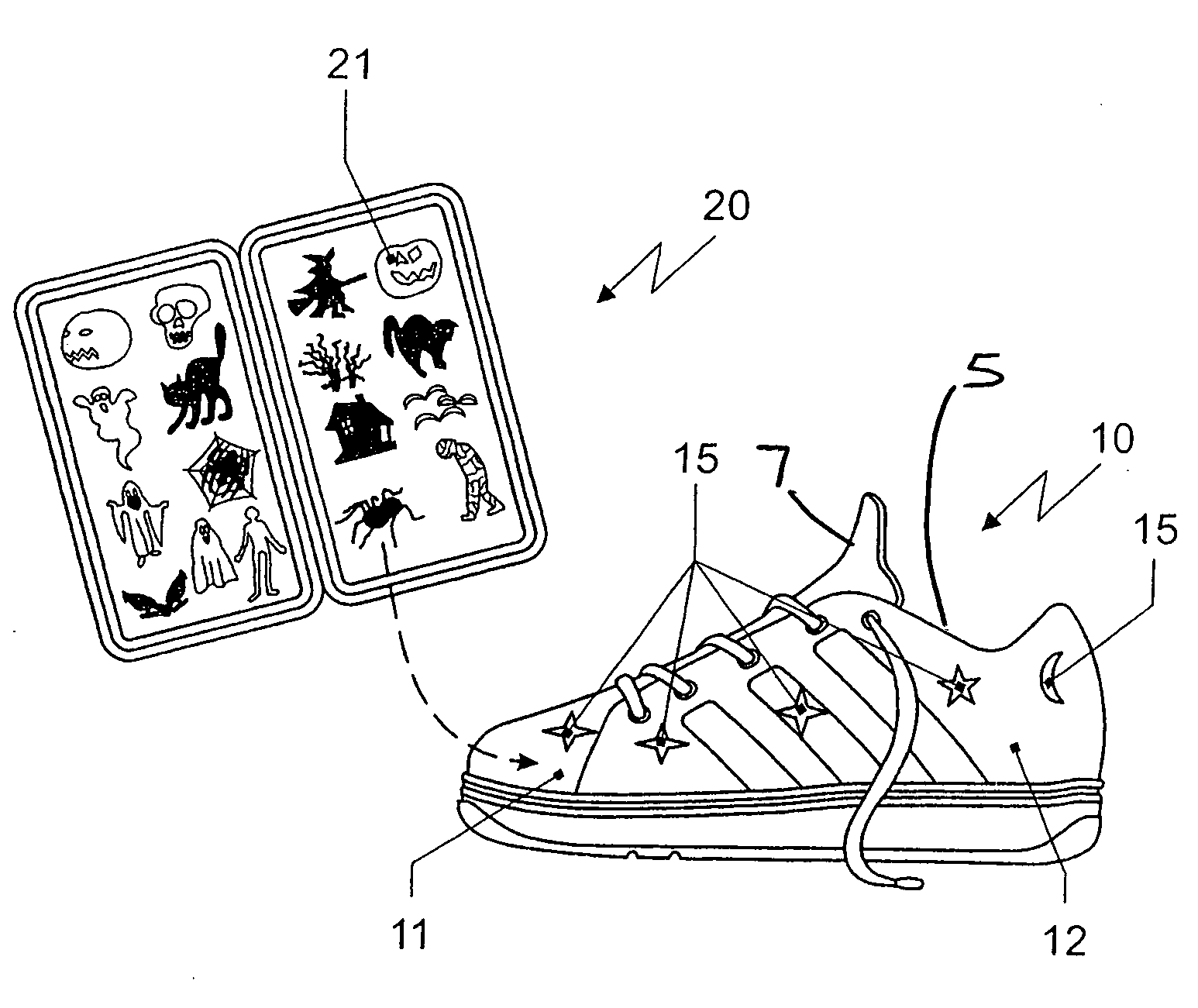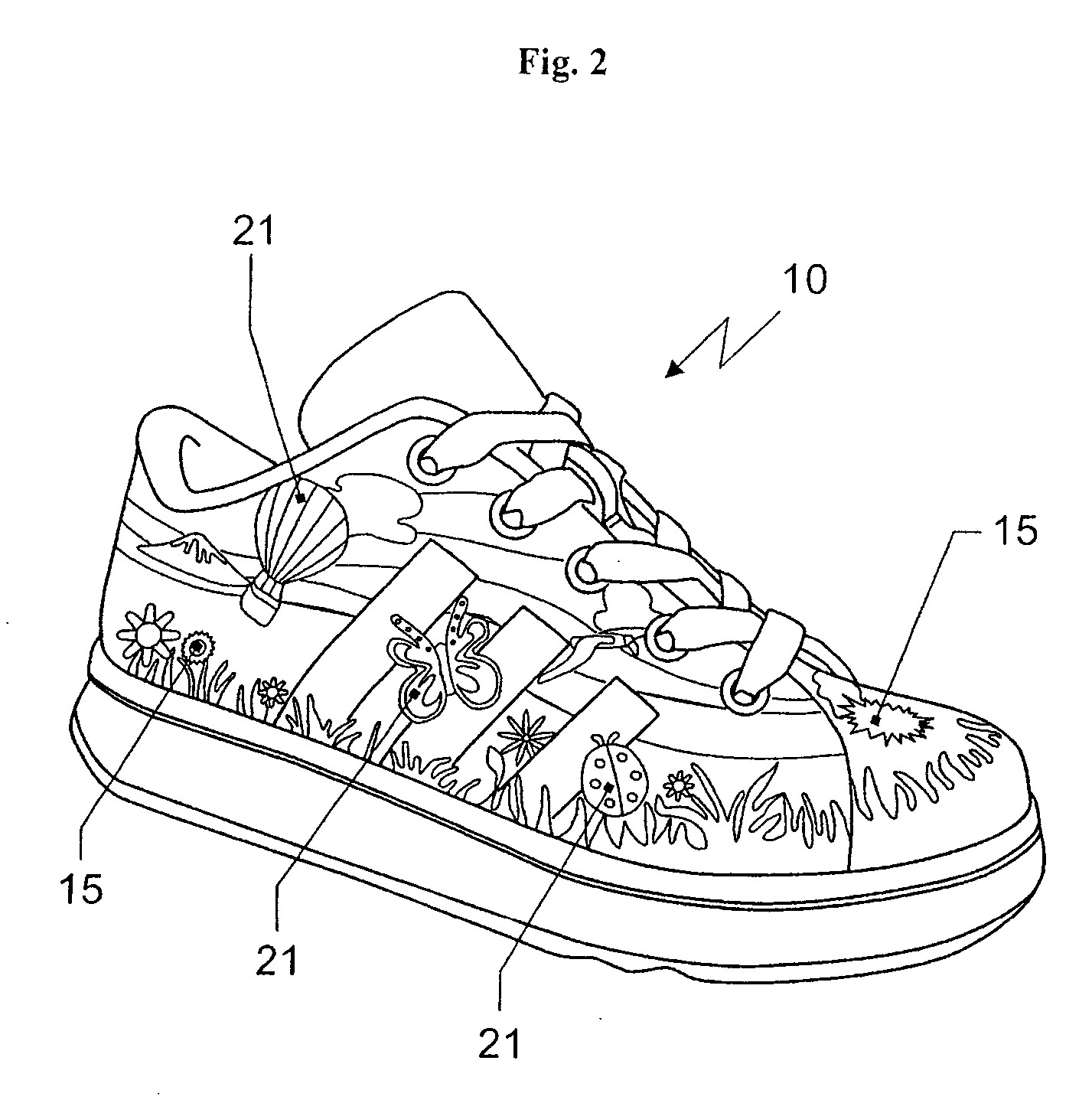System for individualizing a shoe
a shoe and system technology, applied in the field of individualizing a shoe, can solve the problems of not providing a real individual shoe design, unable to provide a shoe with an outer appearance, and unable to provide a shoe design, etc., and achieve the effect of high degree of individualization
- Summary
- Abstract
- Description
- Claims
- Application Information
AI Technical Summary
Benefits of technology
Problems solved by technology
Method used
Image
Examples
Embodiment Construction
[0018] In the following, embodiments of the system are further described with reference to an example of an individual design of children's footwear; however, it is to be understood that a system in accordance with the invention can also be used to individualize the design of other types of shoes independent from their field of use and size.
[0019]FIG. 1 presents a general view of a shoe 10 and a set of rub-on design elements 20. The shoe 10 has an upper 5 having an instep region 11, a tongue 7, a heel region 8, and side regions 12, as is known in the art; however, other types of uppers are contemplated and within the scope of the invention. A plurality of first design elements 15 are permanently arranged on the instep region 11 and the side regions 12 by, for example, imprinting the material of the upper 5 (leather, patent leather, polymers, or the like) before, during, or after the manufacture of the shoe 10. Imprinting can be done, for example, via screen-printing, sublimation pr...
PUM
 Login to View More
Login to View More Abstract
Description
Claims
Application Information
 Login to View More
Login to View More - R&D
- Intellectual Property
- Life Sciences
- Materials
- Tech Scout
- Unparalleled Data Quality
- Higher Quality Content
- 60% Fewer Hallucinations
Browse by: Latest US Patents, China's latest patents, Technical Efficacy Thesaurus, Application Domain, Technology Topic, Popular Technical Reports.
© 2025 PatSnap. All rights reserved.Legal|Privacy policy|Modern Slavery Act Transparency Statement|Sitemap|About US| Contact US: help@patsnap.com



